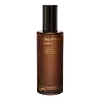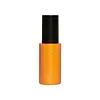What's inside
What's inside
 Key Ingredients
Key Ingredients

 Benefits
Benefits

 Concerns
Concerns

 Ingredients Side-by-side
Ingredients Side-by-side

Water
Skin ConditioningSorbitol
HumectantDisodium Cocoyl Glutamate
CleansingCoco-Glucoside
CleansingCocamidopropyl Betaine
CleansingVaccinium Myrtillus Fruit Extract
Skin ConditioningSaccharide Isomerate
HumectantPanthenol
Skin ConditioningPolyglyceryl-6 Caprylate
EmulsifyingPolyglyceryl-4 Caprate
EmulsifyingMandelic Acid
AntimicrobialSaccharum Officinarum Extract
MoisturisingCitrus Aurantium Dulcis Fruit Extract
MaskingCitrus Limon Fruit Extract
MaskingPEG-45
HumectantTocopheryl Acetate
AntioxidantAcer Saccharum Extract
Skin ConditioningGlyceryl Oleate
EmollientAcrylates/C10-30 Alkyl Acrylate Crosspolymer
Emulsion StabilisingPEG-160 Sorbitan Triisostearate
CleansingCaprylyl Glycol
EmollientSodium Benzoate
MaskingSodium Gluconate
Skin ConditioningCitric Acid
BufferingSodium Citrate
BufferingSodium Hydroxide
BufferingWater, Sorbitol, Disodium Cocoyl Glutamate, Coco-Glucoside, Cocamidopropyl Betaine, Vaccinium Myrtillus Fruit Extract, Saccharide Isomerate, Panthenol, Polyglyceryl-6 Caprylate, Polyglyceryl-4 Caprate, Mandelic Acid, Saccharum Officinarum Extract, Citrus Aurantium Dulcis Fruit Extract, Citrus Limon Fruit Extract, PEG-45, Tocopheryl Acetate, Acer Saccharum Extract, Glyceryl Oleate, Acrylates/C10-30 Alkyl Acrylate Crosspolymer, PEG-160 Sorbitan Triisostearate, Caprylyl Glycol, Sodium Benzoate, Sodium Gluconate, Citric Acid, Sodium Citrate, Sodium Hydroxide
Water
Skin ConditioningHomosalate
Skin ConditioningDiethylamino Hydroxybenzoyl Hexyl Benzoate
UV FilterZinc Oxide
Cosmetic ColorantBis-Ethylhexyloxyphenol Methoxyphenyl Triazine
Skin ConditioningCaprylyl Methicone
Skin ConditioningDimethicone
EmollientPropylene Glycol
HumectantC12-15 Alkyl Benzoate
AntimicrobialCaprylic/Capric Triglyceride
MaskingPhytosteryl/Octyldodecyl Lauroyl Glutamate
Skin ConditioningCurcuma Longa Rhizome Oil
Skin ConditioningSaccharide Isomerate
HumectantIsododecane
EmollientGlucosyl Hesperidin
HumectantMelissa Officinalis Leaf Extract
Skin ConditioningHordeum Distichon Extract
Skin ProtectingCaesalpinia Spinosa Fruit Pod Extract
Glyceryl Caprylate
EmollientDimethiconol
EmollientHydroxyethyl Acrylate/Sodium Acryloyldimethyl Taurate Copolymer
Emulsion StabilisingSodium Acrylates Copolymer
Helianthus Annuus Sprout Extract
Skin ConditioningPolyhydroxystearic Acid
EmulsifyingLauryl Glucoside
CleansingIsohexadecane
EmollientCetearyl Alcohol
EmollientCetearyl Glucoside
EmulsifyingPolyglyceryl-6 Laurate
EmulsifyingXanthan Gum
EmulsifyingLecithin
EmollientHydrolyzed Jojoba Esters
Skin ConditioningDimethicone/Bis-Isobutyl PPG-20 Crosspolymer
EmollientGlycerin
HumectantMyristyl Glucoside
CleansingCaprylhydroxamic Acid
Sclerotium Gum
Emulsion StabilisingPullulan
Polysorbate 60
EmulsifyingSodium Gluconate
Skin ConditioningTocopheryl Acetate
AntioxidantSilica
AbrasiveCitric Acid
BufferingSodium Citrate
BufferingPhenoxyethanol
PreservativeSodium Benzoate
MaskingWater, Homosalate, Diethylamino Hydroxybenzoyl Hexyl Benzoate, Zinc Oxide, Bis-Ethylhexyloxyphenol Methoxyphenyl Triazine, Caprylyl Methicone, Dimethicone, Propylene Glycol, C12-15 Alkyl Benzoate, Caprylic/Capric Triglyceride, Phytosteryl/Octyldodecyl Lauroyl Glutamate, Curcuma Longa Rhizome Oil, Saccharide Isomerate, Isododecane, Glucosyl Hesperidin, Melissa Officinalis Leaf Extract, Hordeum Distichon Extract, Caesalpinia Spinosa Fruit Pod Extract, Glyceryl Caprylate, Dimethiconol, Hydroxyethyl Acrylate/Sodium Acryloyldimethyl Taurate Copolymer, Sodium Acrylates Copolymer, Helianthus Annuus Sprout Extract, Polyhydroxystearic Acid, Lauryl Glucoside, Isohexadecane, Cetearyl Alcohol, Cetearyl Glucoside, Polyglyceryl-6 Laurate, Xanthan Gum, Lecithin, Hydrolyzed Jojoba Esters, Dimethicone/Bis-Isobutyl PPG-20 Crosspolymer, Glycerin, Myristyl Glucoside, Caprylhydroxamic Acid, Sclerotium Gum, Pullulan, Polysorbate 60, Sodium Gluconate, Tocopheryl Acetate, Silica, Citric Acid, Sodium Citrate, Phenoxyethanol, Sodium Benzoate
Ingredients Explained
These ingredients are found in both products.
Ingredients higher up in an ingredient list are typically present in a larger amount.
Citric Acid is an alpha hydroxy acid (AHA) naturally found in citrus fruits like oranges, lemons, and limes.
Like other AHAs, citric acid can exfoliate skin by breaking down the bonds that hold dead skin cells together. This helps reveal smoother and brighter skin underneath.
However, this exfoliating effect only happens at high concentrations (20%) which can be hard to find in cosmetic products.
Due to this, citric acid is usually included in small amounts as a pH adjuster. This helps keep products slightly more acidic and compatible with skin's natural pH.
In skincare formulas, citric acid can:
While it can provide some skin benefits, research shows lactic acid and glycolic acid are generally more effective and less irritating exfoliants.
Most citric acid used in skincare today is made by fermenting sugars (usually from molasses). This synthetic version is identical to the natural citrus form but easier to stabilize and use in formulations.
Read more about some other popular AHA's here:
Learn more about Citric AcidSaccharide Isomerate comes from sugars found in corn. It is a skin hydrator.
The structure of this ingredient can be altered to be more similar to the carbohydrates found in our skin. This ability to mimic our skin gives it hydrating properties.
Specifically, saccharide Isomerate is a humectant. Humectants draw moisture from the air to our skin.
Research shows Saccharide Isomerate to be an effective moisturizer.
Learn more about Saccharide IsomerateSodium Benzoate is a preservative. It's used in both cosmetic and food products to inhibit the growth of mold and bacteria. It is typically produced synthetically.
Both the US FDA and EU Health Committee have approved the use of sodium benzoate. In the US, levels of 0.1% (of the total product) are allowed.
Sodium benzoate works as a preservative by inhibiting the growth of bacteria inside of cells. It prevents the cell from fermenting a type of sugar using an enzyme called phosphofructokinase.
It is the salt of benzoic acid. Foods containing sodium benzoate include soda, salad dressings, condiments, fruit juices, wines, and snack foods.
Studies for using ascorbic acid and sodium benzoate in cosmetics are lacking, especially in skincare routines with multiple steps.
We always recommend speaking with a professional, such as a dermatologist, if you have any concerns.
Learn more about Sodium BenzoateSodium Citrate is the sodium salts of citric acid. In skincare, it is used to alter pH levels and acts as a preservative.
Its main functions are to maintain the pH of a product and neutralize metal ions.
The acidity of our skin is maintained by our glands and skin biome; normal pH level of skin is slightly acidic (~4.75-5.5).
Being slightly acidic allows our skin to create an "acid mantle". This acid mantle is a thin barrier that protects our skin from bacteria and contaminants.
Learn more about Sodium CitrateThis is the synthetic salt of gluconic acid, a form of PHA and mild exfoliant.
It is mainly used to stabilize oil and butter formulations from going bad. Sodium gluconate is a humectant, pH regulator, and chelating agent.
Chelating agents help neutralize unwanted metals from affecting the formulation.
Sodium gluconate is water-soluble.
Learn more about Sodium GluconateTocopheryl Acetate is AKA Vitamin E. It is an antioxidant and protects your skin from free radicals. Free radicals damage the skin by breaking down collagen.
One study found using Tocopheryl Acetate with Vitamin C decreased the number of sunburned cells.
Tocopheryl Acetate is commonly found in both skincare and dietary supplements.
Learn more about Tocopheryl AcetateWater. It's the most common cosmetic ingredient of all. You'll usually see it at the top of ingredient lists, meaning that it makes up the largest part of the product.
So why is it so popular? Water most often acts as a solvent - this means that it helps dissolve other ingredients into the formulation.
You'll also recognize water as that liquid we all need to stay alive. If you see this, drink a glass of water. Stay hydrated!
Learn more about Water